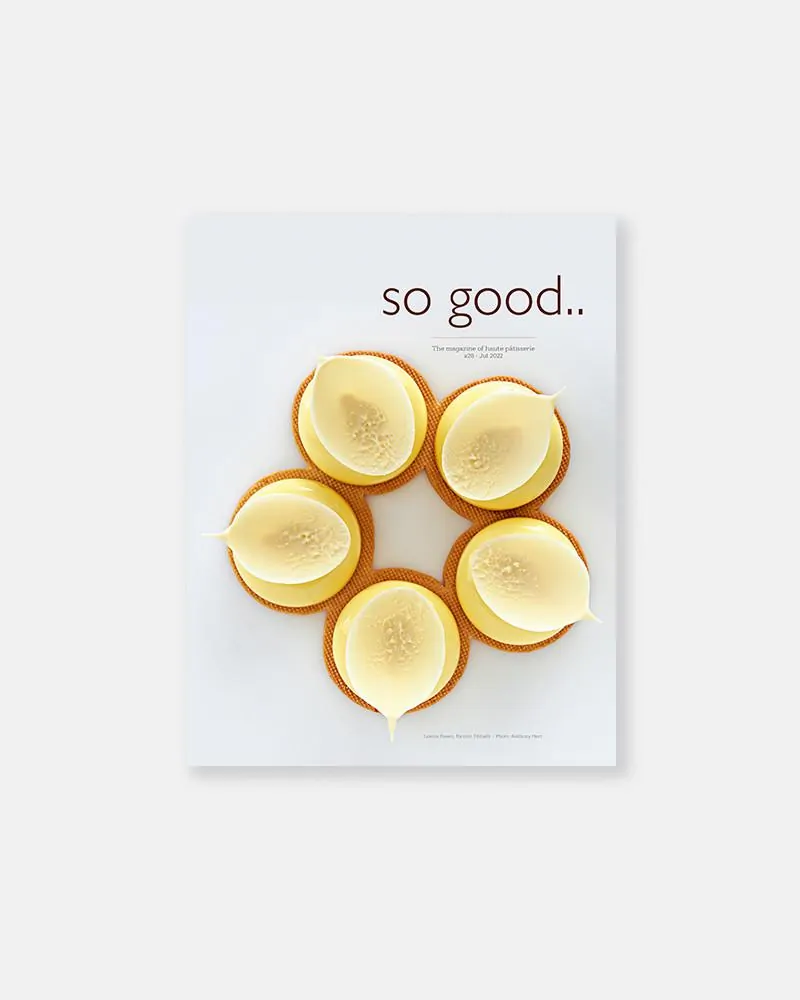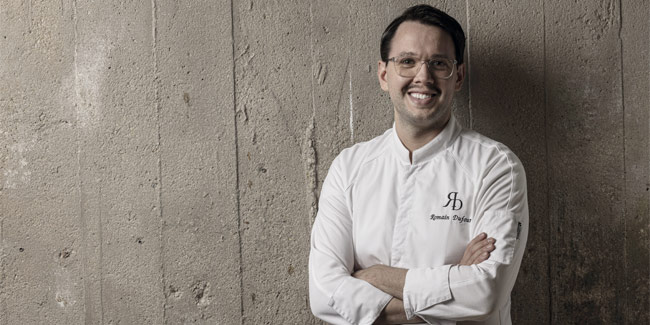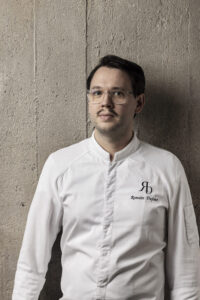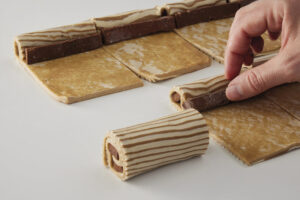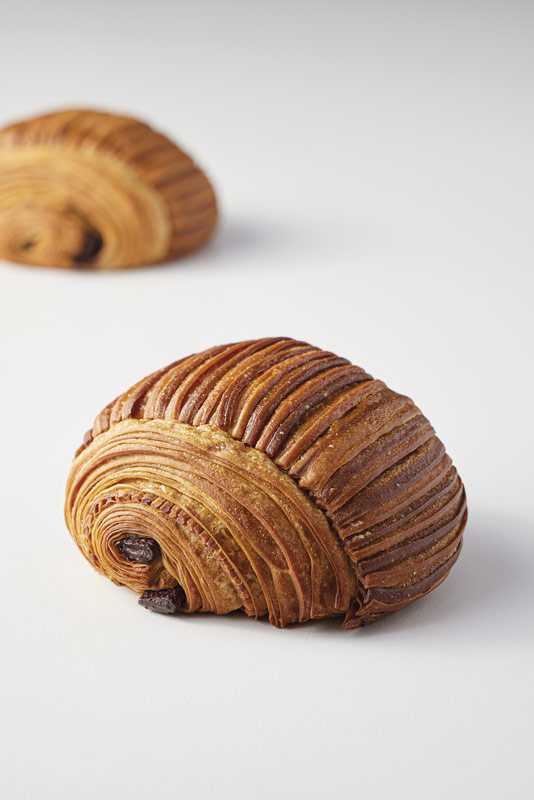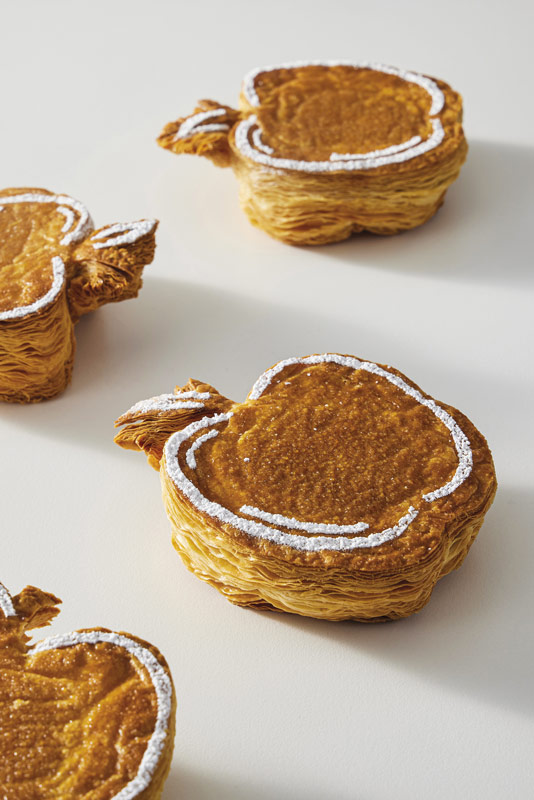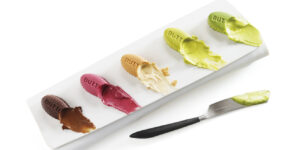Categories Pastry Chef Articles
Romain Dufour: ‘The technique behind making the perfect croissant is more difficult that it seems’
Romain Dufour’s career is marked by an early awakening to the bakery world, thanks to his uncle’s business almost from the age of 10, and a subsequent development imprinted by great experiences that gradually took him away from that bakery in Farges en Septaine, in the center of France, and led him first to Paris, then to Dubai and finally to Chicago. From there, he combines his work as ‘Master Baker’ of R&D for the bakery ingredients company Eurogerm with the training and consulting work he provides from his own website.
For Romain Dufour, viennoiserie is in vogue all over the world, and not only among chefs, but also among consumers, especially in the United States. The world of laminated dough is full of attractive aspects, no matter how you look at it: whether it is the technical challenges it poses, the possibility of offering new original formats, or the gourmand and popular nature of its most emblematic specialties. Aware of this, Romain Dufour is doing his bit by pointing out two ways to take issues -such as the more or less sweet character of these products- a step further, with an apple paste that incorporates cider vinegar and a much more refreshing filling, or with a coffee-smoked butter which makes it possible to achieve a quite unprecedented taste register. But let’s start by getting to know Romain a little better at so good.. magazine 28, don’t you think?
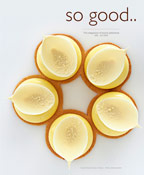
What people and experiences have helped you most to shape the professional you are today and your work philosophy?
My uncle was the first person to give me a taste of the bakery world, but it is when I started working at Plaza Athenée in Paris with Christophe Michalak that I developed in creativity, discipline, and learning to raise the bar for each new day of work. I am fueled by new challenges, which has carried with me through different positions in my career thus far. At 21 years old, I became the head baker for Intercontinental Hotel Dubai, and led a large team of bakers, and a daily changing menu. And after several years, I uprooted myself again to the United States to tackle a Research and Development position, without any previous experience in R&D. My past experiences have shaped me as a baker tremendously and I am grateful for each opportunity that has come my way.
What took you to the United States and what do you value about your work there?
Eurogerm USA, a French/American bakery ingredient company, hired me in 2016 to be their Master Baker of Research and Development for North America. It was a big change from my past of working in production, but I am so grateful I took the leap. My knowledge not only of technology, and understanding the action of enzymes, but even comprehending the use of each ingredient on an ingredient list of a product has grown astronomically. This information that I have been able to learn on the job is absolutely priceless and it is something I am trying to pass on to fellow bakers. Eurogerm USA also has offered me the possibility to develop myself more as a baker and create what I enjoy the most. I love to bake higher end products like laminated baked goods and sourdough Panettone. And more recently I have been able to extend myself even further and teach masterclasses both in person and online at ChefRomainDufour.com. After the first lockdown in 2020, I launched my own website as a way to reach out to more people around the world and connect even more with other chefs and baking enthusiasts. The United States offers much more opportunity to get creative and start side projects, which would have been a much more long and arduous task in Europe.
‘My past experiences have shaped me as a baker tremendously and I am grateful for each opportunity that has come my way.’
How do you see the world of viennoiserie today? Is it fashionable in the USA?
Viennoiserie is definitely becoming trendier! There are a lot of super talented pastry chefs that took the opportunity to blend viennoiserie into their lineup. It is unfortunate that we don’t see enough bakers under the limelight more often. Viennoiserie is shared amongst Pastry Chefs and Bakers and I feel there is room for perhaps a different vision to allow even more possibility and creativity. It is very popular in the US and it is just the beginning as we start to see more and more sourdough viennoiserie coming.
Among chefs, it is one of the products that appears most frequently on Instagram. Is all that glitters gold?
I think viennoiserie is becoming very exciting for everyone for different reasons. First of all, it is newer, we have seen so many cakes, petit gateaux,… these past few years that people lose the excitement over it. I also think that the technique behind making the perfect croissant is more difficult that it seems. We are talking about living cells that react based on temperatures, humidity… Plus for any smallest change you will do on your recipe or process, you will have an impact on the texture. Do you want it short bite or longer bite? Do you want open crumb or pretty close crumb? Do you want it super flaky or not? A lot of that can be managed from the recipe or the process so it create infinite possibilities.
‘Viennoiserie is definitely becoming trendier! There are a lot of super talented pastry chefs that took the opportunity to blend viennoiserie into their lineup. It is unfortunate that we don’t see enough bakers under the limelight more often.’
What do you value most in a piece of croissant or any other viennoiserie specialty?
When I eat a plain croissant, first I’m looking at the aspect. It needs to be shiny. I like to see the layers but it doesn’t have to be too present because it could mean it is a dry croissant or underproof. Then when I eat that croissant, I like to have a short bite, I don’t like to chew too long for it. The flavors needs to be buttery at first and then taste a little bit the fermentation in the back of my mouth. I like it flaky but I don’t want to have half of the croissant falling off the table too. Am I too difficult? Probably haha. I’m very hard on myself but it helps me ensure that my work is stronger than I left it the day before.
What are the keys to a successful assortment of puff pastry viennoiserie?
Without any doubt the ingredients are going to be a big part. I like to use a very good quality butter. For these 2 products, I decided to use Isigny Sainte Mère. Very often in laminated product you see the usage of strong flour to obtain a great volume and be easier for the baker. I actually like to use weaker flour, I’m going to lose some volume, that’s for sure, but the texture of the finished croissant is going to be meltier, what’s baking without a challenge? Once, I did a test of croissant dough using Gruau Flour T45 against a Farine de tradition Française T65. I had to reduce the hydration on the T65 and do 1 or 2 more folds after mixing to get to the volume I was expecting at the end. The result was amazing! We got a very melty croissant with a crumb color slightly darker than the T45. Guys, I’m not saying tomorrow you will have to change your flour to a weaker flour, what I’m saying is that the choice of the flour will have a massive impact on the final texture and you need to have it in mind.
